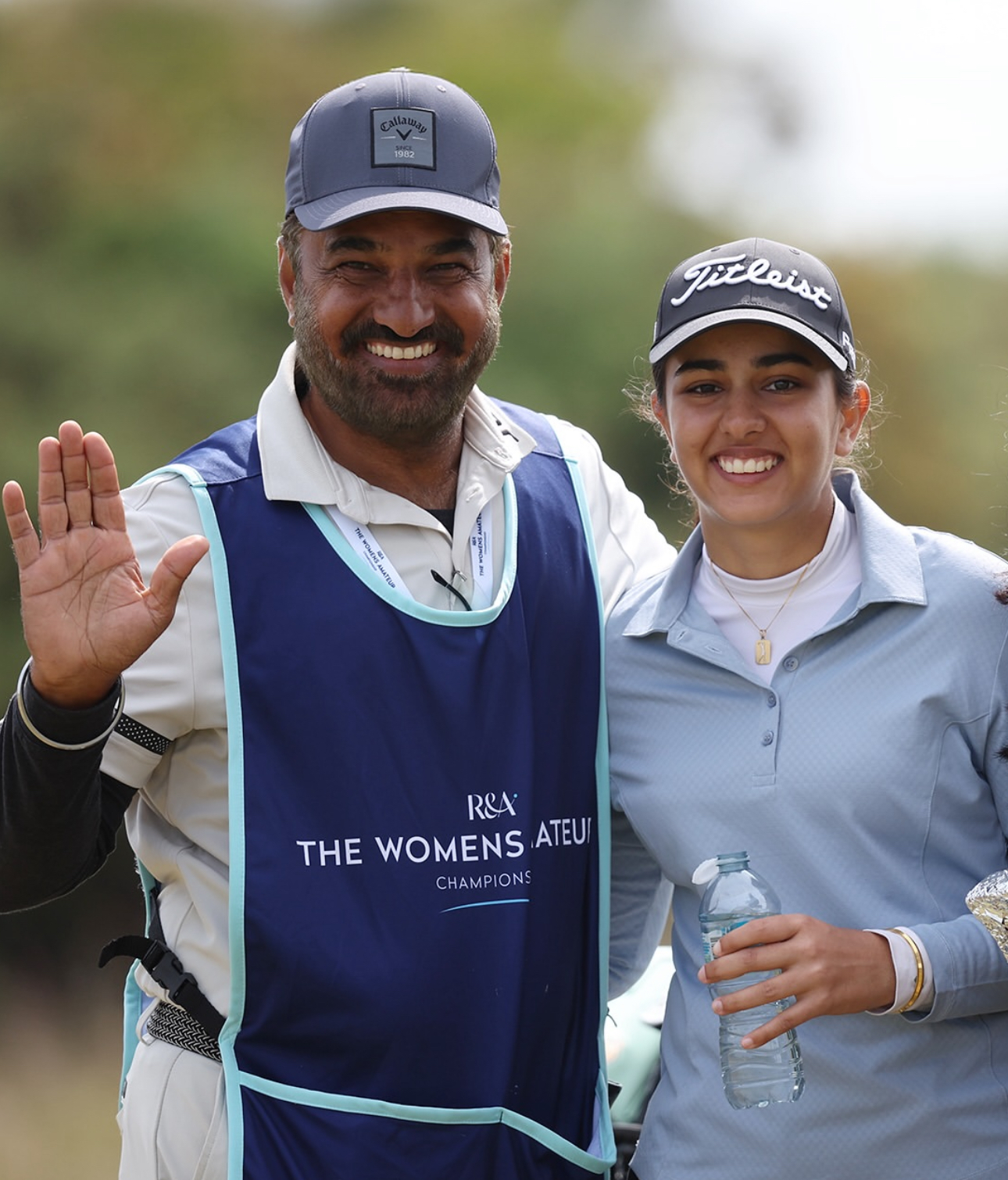
Mannat with her father, Col. J.S. Brar, who caddied for her in Nairn
18-year-old Mannat Brar of Pune made history last week in Scotland, becoming the first Indian woman to reach the Round of 16 in The Women’s Amateur Championship—the oldest and most prestigious women’s amateur event in the world. Held at Nairn Golf Club from June 10–15, the 122nd edition of the championship featured a global field of 143 of the best amateurs from more than 35 countries.
Brar entered as a private entrant with consistent results over the past season—including a made cut at the Women’s Amateur Asia-Pacific in Vietnam, solid showings on the LET Access Series, and a third-place finish at last year’s R&A Girls’ Amateur Championship. This was her third appearance at The Women’s Amateur and her best by far.
Brar opened the week with a 1-over 73 followed by a 1-under 71, safely making it into the top-64 stroke play cutline in the 16th place. Past attempts by players like Avani Prashanth, Sneha Singh, and Nishna Patel had all ended in the stroke play phase.
In the Round of 32, Brar faced Germany’s Uma Bergner and made a commanding start, closing out the match 5&4 with a flurry of birdies on the front nine. In the Round of 32, she faced Northern Ireland’s Rebekah Gardner, with Brar staging a remarkable comeback from 4 down in the first 4 holes. Brar was dormie down at the 15th hole and fired three straight birdies to force a playoff to clinch the win on the 21st hole, recording a stunning victory against all probability.
In the Round of 16 against Spain’s Paula Francisco, Brar was 3 down after the first 6 holes, but she leveled the ground and brought back the match to A/S through 17 holes. She ultimately lost to a Birdie on the 18th hole in a hard-fought battle with valiant effort, displaying the kind of grit, strategy, and execution that defined the best players in the draw.
Before Brar’s historic run, only 3-time Olympian Aditi Ashok’s had progressed to the Round of 16 in 2015.
Brar’s performance is also a reflection of the benefit of structured overseas preparation. Instead of arriving for a one-off event with little exposure to European conditions, Brar spent multiple weeks competing in similar courses and weather on the LET Access Series (LETAS), fine-tuning her game. This is in sharp contrast to India’s traditional approach of sending teams for one-off events with limited overseas preparation. Brar’s form at Nairn was not a surprise for those tracking her recent events, where she had been holding her own against strong fields on the LETAS.
Brar’s success is a compelling case study that proves the value of preparing young talents through a series of preparatory events in event-specific conditions as opposed to isolated appearances, which can significantly improve Indian players’ performance at global events.

